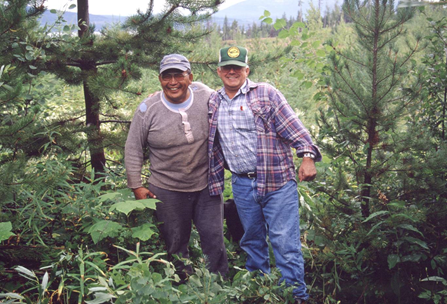 As co-management partners seek to work together they are faced with the challenges of identifying a common vision and then of judging the process and the achievement of shared goals. One of the requirements for proper implementation of co-management is effective monitoring and evaluation. A case study of the John Prince Research Forest (JPRF) was done to provide insight into the values of local co-management partners and stakeholders, both Aboriginal and non-Aboriginal. By talking to experts from Tl’azt’en Nation, the University of Northern British Columbia (UNBC), and Fort St. James through a community-centred process, 19 criteria and 86 indicators (C&I) were identified to evaluate JPRF results and impacts. This research attempts to democratize the process of C&I development and a mixed methods approach, including unique expert selection, idea generation, and framework analysis techniques were used to develop and analyse the outcomes of the research.
As co-management partners seek to work together they are faced with the challenges of identifying a common vision and then of judging the process and the achievement of shared goals. One of the requirements for proper implementation of co-management is effective monitoring and evaluation. A case study of the John Prince Research Forest (JPRF) was done to provide insight into the values of local co-management partners and stakeholders, both Aboriginal and non-Aboriginal. By talking to experts from Tl’azt’en Nation, the University of Northern British Columbia (UNBC), and Fort St. James through a community-centred process, 19 criteria and 86 indicators (C&I) were identified to evaluate JPRF results and impacts. This research attempts to democratize the process of C&I development and a mixed methods approach, including unique expert selection, idea generation, and framework analysis techniques were used to develop and analyse the outcomes of the research.
Criteria and indicators provide a valuable tool to reflect on progress, initiate learning, and promote action. JPRF criteria and indicators capture values of critical importance to local people who experience co-management first hand and who have their own definitions of sustainability and success. This research illuminated the multi-faceted ways in which co-management outcomes are conceived by local people as well as the critical processes that they identified as important for successful co-management.
http://www.jprf.ca.php56-22.dfw3-1.websitetestlink.com/research/post/local-level-criteria-and-indicators-an-aboriginal-perspective-on-sustainable-forest-management

 Respect for the People
Respect for the People